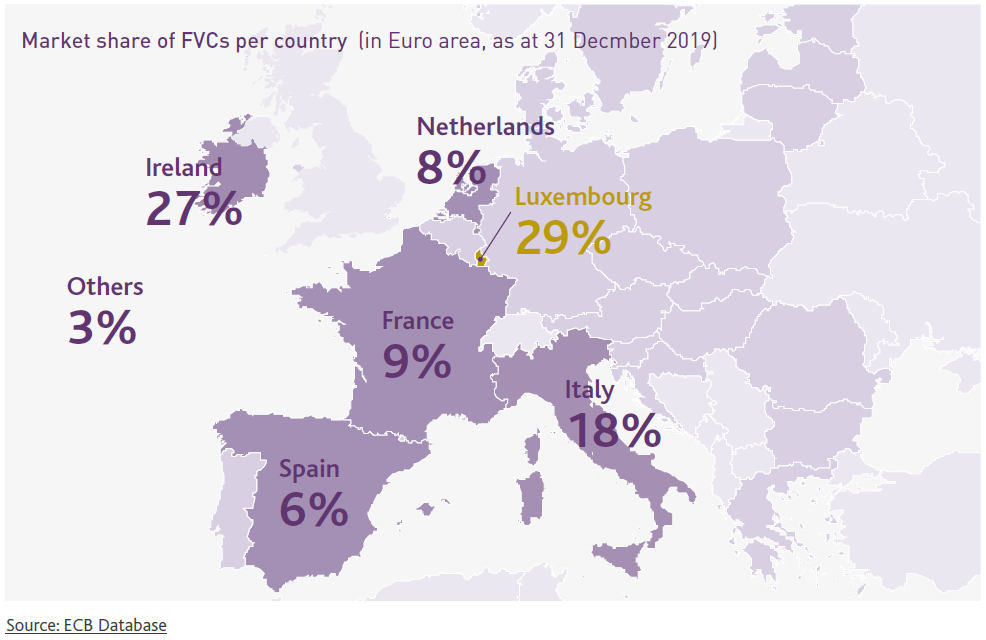NEW REGULATORY FRAMEWORK FOR SECURITISATION
EU Securitisation Regulation and the amendment of the Capital Requirements Regulation (CRR) concerning securitisation became effective as of 1 January 2019, and as such securitisation transactions are now directly subject to EU regulation.
As part of this new regulatory environment, a “Simple, Transparent, and Standardised” Label (STS) was introduced for securitisation vehicles, with a notification requirement to ESMA.
In Luxembourg, the first two STS securitisation vehicles were issued in March 2019, and as of mid May 2020 there were already 250 STS structures published on the ESMA website. This clearly shows a positive development for the European securitisation market and thus a positive impact on the European Capital Markets.
Throughout the years, Luxembourg has maintained its position as one of the leading centres for securitisation and structured finance vehicles. One of the main reasons for this position is the existence of a dedicated securitisation law which ensures innovation and legal certainty in securitisation structures, and is robust and flexible at the same time.
Overall, the outlook for Luxembourg’s securitisation industry is strong, particularly in context of the Capital Markets Union and the ongoing redevelopment of the European securitisation market, which Luxembourg is expected to make an important contribution to over the coming years.

Covered bonds – called Lettres de Gage or Pfandbriefe – are debt instruments secured by a cover pool of mortgage loans (property as collateral) or public-sector debt to which investors have a preferential claim in the event of default. Governed by specific legislation and issued by dedicated specialised banks, Luxembourg covered bonds offer impressive flexibility to issuers and a high level of protection to investors. Covered bonds are increasingly used in the marketplace as a funding instrument and play an important role in the financial system. The issuance of covered bonds enables credit institutions to obtain a lower cost of funding in order to grant mortgage loans for housing and non-residential property as well as to finance public debt and other types of assets.
More about
-
A Comprehensive capital markets ecosystem
As the leading cross-border financial centre in the eurozone, Luxembourg has developed a comprehensive ecosystem, enabling investors to connect with international markets.
Read More -
International pioneer in debt Capital Markets
The Luxembourg financial centre has developed a comprehensive range of services to meet the growing demands of debt capital markets and connect international investors and borrowers.
Read More -
Securitisation
Throughout the years, Luxembourg has maintained its position as one of the leading centres for securitisation and structured finance vehicles.
Read More
-
Initial public offerings (IPOs)
Going public is a transformational event. To do so successfully, a company or its sponsors must navigate a long, complex process involving, inter alia, aspects relating to strategy, tax, accounting, reporting standards, treasury and financial risk management and governance.
Read More -
The future of Capital Markets
Blockchain and DLT have impacts both in terms of defining new operating models or improving business models for existing capital markets, or bringing the benefits of market liquidity to new asset classes via a process known as tokenisation.
Read More -
Timeline of developments in luxembourg capital markets services Read More



